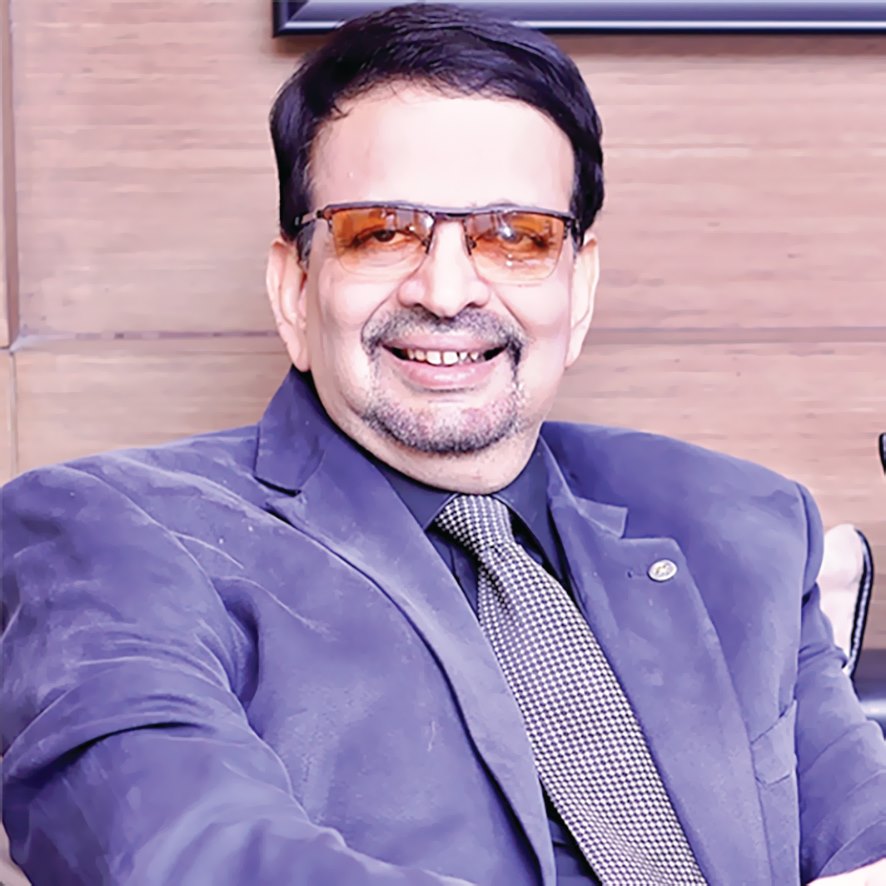“By doing charity, you may lose money, but it comes back.”
Dr. Mohan Rajan shares with Marie Banu the reason for increased need for eye health care.

Dr. Mohan Rajan, is a renowned ophthalmologist in Chennai. He completed his MNAMS in Ophthalmology at the National Academy of Medical Science, 1998 and pursued DNB, DO Ophthalmology from Sankara Nethralaya in1987.
An accomplished eye surgeon, he has restored the sense of sight to thousands of visually challenged people across the country. He is currently the Medical Director and Founder of Rajan Eye care hospital Private limited in Chennai. He is also the Managing Trustee of the Chennai Vision Charitable Trust.
Dr Mohan is the recipient of Best Doctor Award from the Government of Tamil Nadu for the services rendered to physically disabled people in 2008; Rotaract – Paul Harris Fellow from Rotary International in 1997. He has also received The Euro Times Award for Surgical excellence in 2008 and Achievement Award from American Academy of Ophthalmology in 2015.
In an exclusive interview, Dr. Mohan Rajan shares with Marie Banu the reason for increased need for eye health care.
About your interest in ophthalmology?
Ophthalmology runs in my blood. My grandfather was highly trained in Ophthalmology, my father Late Dr. Rajan was a Professor in Ophthalmology in Government Eye Hospital –the world’s second oldest eye hospital. From the age of 10, I was assisting my father in cataract surgery.
In 1985, we started Rajan Eye care hospital with an aim to give quality treatment irrespective of caste, creed, culture, region or social status.
My wife is also an ophthalmic surgeon and both my daughters are also Ophthalmologists.
Is the change in lifestyle affecting eye health of present day children?
This is an important issue which I am trying to address in all forums. One in every five children are wearing spectacles. There has been an increase in myopia among children from 6 percent in 2007 to 15 to 20 percent today. In Singapore, the situation is worse where there has been 20 to 30 percent increase in myopia among children. This is because they have strong academic oriented programmes.
About 20 years ago, children were exposed to outdoor activities and there is a chemical called dopamine in sunlight that prevents myopia. Today, children are mostly in air-conditioned rooms playing video games. They are glued to television sets, or mobile phones and tablets. They eat fast food which has less Vitamin A.
Can you tell us about Netra Vahana project?
The biggest problem in today’s villages is poverty and along with that is the issue of blindness. Cataract is a major cause of blindness where there are 13 to 15 million people in our country being affected.
Now, diabetic retinopathy is another issue of concern as India is soon going to be the Diabetic capital of the world. It is expected that by 2025, 150 to 200 million people will become diabetic and 25 to 30 percent of this segment will have diabetic retinopathy.
Under the Chennai Vision Charitable Trust, the philanthropic arm of Rajan Eye Care Hospital, we run a Netra Vahana project. Cognizant Foundation has supported this project, which is the first of its kind in India. We conduct screening for cataract, glaucoma, diabetic retinopathy, and refractive errors; offer free spectacles; and conduct eye screening in rural schools.
We have been able to take tertiary eye care treatment to the doorsteps of rural poor. For example, if a patient has diabetic retinopathy, all the required equipment like Green Laser, Fundus camera, and other equipment are available in the mobile ophthalmic unit which makes it convenient for the ophthalmologists to provide treatment at the camp site itself. This was not possible earlier as we used to bring the patients to the main hospital to offer advanced treatment.
Aftercare is essential for patients who have undergone the cataract surgery as a layer forms behind the lens over a period of time. We use the YAG laser to treat this and such minor surgeries are conducted in the mobile bus itself.
Till date, we have covered more than 500 villages in the State of Tamil Nadu and are now planning to scale out our operations so that we can reach out to more villages.
People think that by doing charity we lose money. But, I would say that it is the other way around. By doing charity, you may lose money, but it comes back. You have to make sure that your expertise and knowledge that you have learnt is given to everybody. My father used to say: “Keep doing the service, God will take care!”
What has been the success of Rajan – Rotary Eye bank?
Corneal blindness is one of the major problems in our country. Approximately, there are about 3 million people who are blind due to corneal problems. Cornea is like a watch glass, when affected you will not be able to see the time. Similarly, the cornea is a transparent structure. So, when it gets affected with trauma, injury or infection, the cornea becomes white. This is called cornea opacity that blocks the light and the patient is not able to see. In our country we have approximately 2.33 million people who are blind due to corneal disorder. In such cases, we need to do corneal transplant surgeries.
60 percent of corneal blindness occurs below the age of 15 years, which means that you if can eradicate corneal blindness you can eradicate blindness among children to a large extent.
We started the Rajan Eye Bank in 1996 and subsequently got affiliated with Rotary and renamed it as Rotary- Rajan Eye Bank. We conduct free corneal transplant surgeries, mainly focusing on children, and also propagate the message on eye donation.
Cornea procurement is very less, although better than before. When we started the eye bank, we used to get only one pair of eyes in 10 days. Now, we are getting one pair of eyes every day. There are 550 eye banks in our country and all of them put together, we are doing 50,000 to 60,000 corneal transplants in
a year.
The fear of eye donation continue in rural areas although considerably lesser than before. This is because many celebrities have been involved in propagating the message of eye donation. Aishwarya Rai is the ambassador of Eye Bank Association of India, and we have been roping in sports legend Mr. Vijay Amritraj and other leading actors as our sight ambassadors. This has made a huge impact and led
to increase in eye donations across
the country.
Your message for our readers?
In our country, people are led by superstitions, false beliefs, and fear of donating eyes which we are trying to overcome through education. With 1.2 billion population in our country, we should be able to take care of the treatment of corneal blindness to a
large extent.
Sri Lanka exports eyes to 35 different countries as they have surplus eyes. No religion is against eye donation, but no religion other than Buddhism has told that eye donation should be done after one’s lifetime. That’s the reason why we are lagging behind.
There is a National Eye Donation Fortnight which is celebrated every year from 25th of August to the 8th of September. During this period, we promote the eye donation programme and encourage people to pledge their eyes after their lifetime. I request the readers to join this movement.

